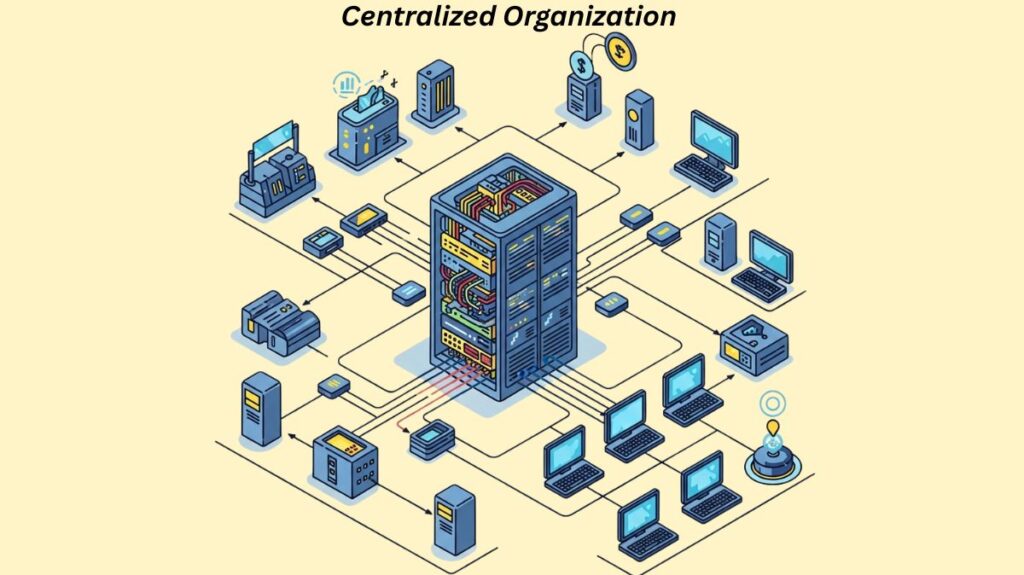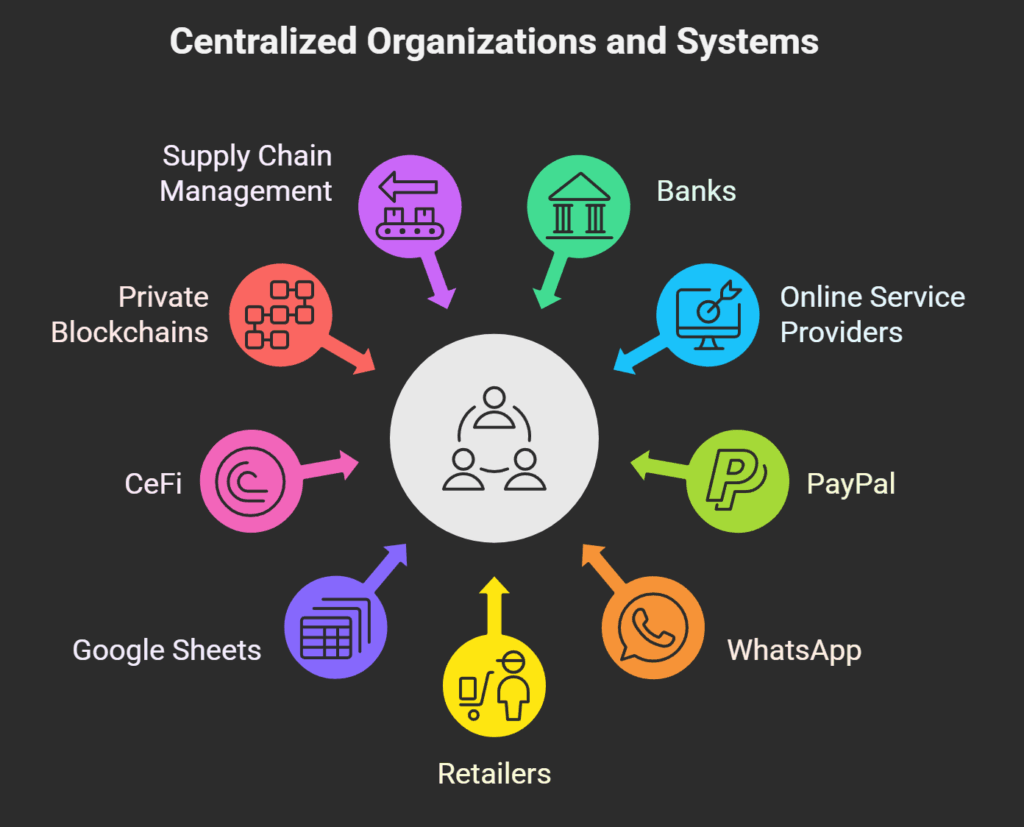Centralized Organization definition

In essence, a traditional information technology (IT) system that functions under a single authority is a centralized organisation or system. This central authority is alone in charge of the system’s functioning and has complete control over it. Usually, they depend on a single server to handle all requests from outside sources.
Also Read About Testnet in Blockchain Differences Between Testnet & Mainnet
Features and Management
One Central Authority and Control
In a centralized system, the data is managed and operated by a single central authority. This authority has the ability to give and revoke access and is in charge of the ledger. In contrast to certain other systems, a centralized system’s sole administrator has the authority to “update” and “delete” information as well as establish rules for the ledger. That all system management is handled by a single central authority or server, which serves as the channel for all information, control, and decision-making.
Client/Server Model
The architecture is sometimes referred to as a star topology or a client/server model. Requests are routed through a central server that serves as a middleman so that clients can communicate with one another.
Dependency on a Single Source
In a centralized system, every user is reliant on a single service provider.
Distributed but Centralized Control
If one entity retains control of the ecosystem, a system can be deemed central even if its components are spread out geographically. Even if there are numerous scattered nodes in the system, there is still a central controller. A central authority may retain control even if data and processing tasks are dispersed across multiple nodes, the source adds.
Advantages
Centralized ecosystems have a number of advantages:
- In comparison, they are easier to design and manage.
- They offer specialised resources, which occasionally lowers their cost.
- In general, updates are simple and quick to apply.
- With centralized consensus, a centralized strategy can provide organisations with peace of mind.
- With regard to the dispersed locations of components, they can attain fault tolerance, low latency, and high scalability. How centralized control and streamlined decision-making could lead to faster transaction rates and more efficient operations.
Also Read About Understanding Blockchain Scalability Problem And Solutions
Disadvantages and Challenges
Despite their advantages, centralized systems face significant challenges:
Single Point of Failure
The potential for a single point of failure is a serious vulnerability. All participants may be unable to communicate, business productivity may be disrupted, and service availability may be jeopardised if the central source is lost or malfunctions. Because centrally controlled ledgers are susceptible to loss or destruction, users must have faith in the owner to provide enough backups. The source restates that the network as a whole may be in danger if the main entity or node is compromised. Low fault tolerance results from this.
Security and Mass Hacking
Centralized systems are insecure. By reconnaissance of a few IP addresses, attackers can easily find holes and launch SQL injection or DoS attacks that jeopardise user security and privacy. For appropriate backups, transaction validation, and refraining from changing previous transactions, users must rely on the owner. If such systems don’t apply best practices or get important security fixes, they might be insecure. The source also emphasises vulnerability to internal penetration and hacking.
Costs and Monopoly
A monopoly brought on by centralized control may result in increased transaction fees. For example, commissions for currency transactions are charged by financial intermediaries.
Scalability Bottlenecks (User Access/Data Accumulation)
Information that has been gathered in one location may only be available to a select few users, hence denying a wide audience access to it. Scalability is constrained and ineffective on a wide scale.
Lack of Transparency
Users must trust the owner to validate transactions on a centrally held ledger because they are opaque and might not be legitimate.
Difficulty in Reconciliation
Reconciliation is challenging since a client has to compare its ledger to the bank’s and persuade the bank of the “true state” in the event that there are differences.
Data Control and Privacy Concerns
Data control and privacy issues are brought up by the central authority’s considerable power over the personal data that is shared with them.
Ineffective Decision-Making
Remote nodes frequently have to wait for the central controller to approve choices, which lengthens wait times and raises security concerns.
Also Read About What is Hyperledger Sawtooth Blockchain Applications
Examples of centralized organizations

Real-world Examples Common examples of centralized organizations and systems include:
- Banks: Typical examples include traditional banks that keep ledger books.
- Online Service Providers: This traditional approach is used by a large number of online service providers, including Google, Amazon, eBay, and Apple’s App Store.
- PayPal is cited as an illustration of a centralized database in which every node is connected to a single, central node that is under the management of a single organisation.
- WhatsApp: A central server is used to push messages.
- Retailers: A central authority can be compared to a retailer who controls the supply of fresh produce.
- Google Sheets: The environment is centralized and vulnerable to a single point of failure, although allowing collaborative editing.
- Centralized Cryptocurrency Exchanges (CeFi): These handle user accounts, transactions, and digital assets in a manner akin to that of conventional financial institutions.
- Private Blockchains: A lot of business-use private or permissioned blockchains are centralized, with the governing entity in charge of operations and access.
- Supply Chain Management: A centralized organisation may be used by certain businesses investigating blockchain technology for product monitoring in order to maintain the ledger and restrict access.
Contrast with Decentralized Systems
Although decentralization is frequently linked to blockchain technology, there are centralized blockchain systems as well. One of the main differences between centralized and decentralized systems is that the former share control and decision-making among several independent nodes, while the latter have a single central authority making decisions and managing data. Differences in fault tolerance, transparency, and trust mechanisms result from this. Decentralization transfers trust to algorithms and provides transparency, whereas centralized systems depend on the central institution to maintain accurate data states.
